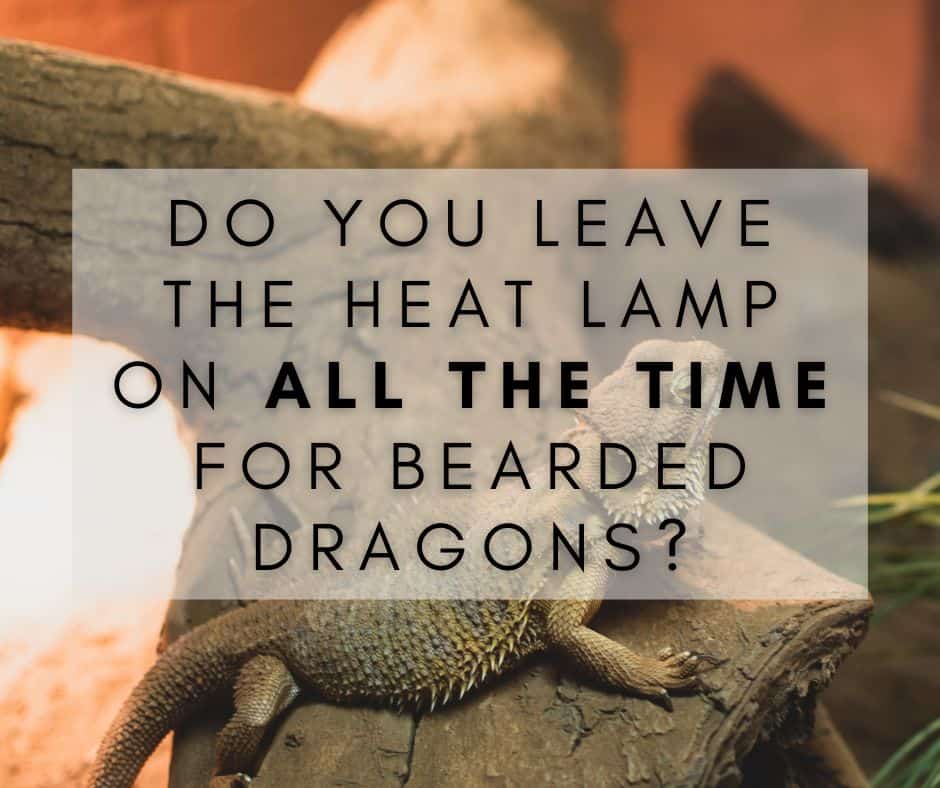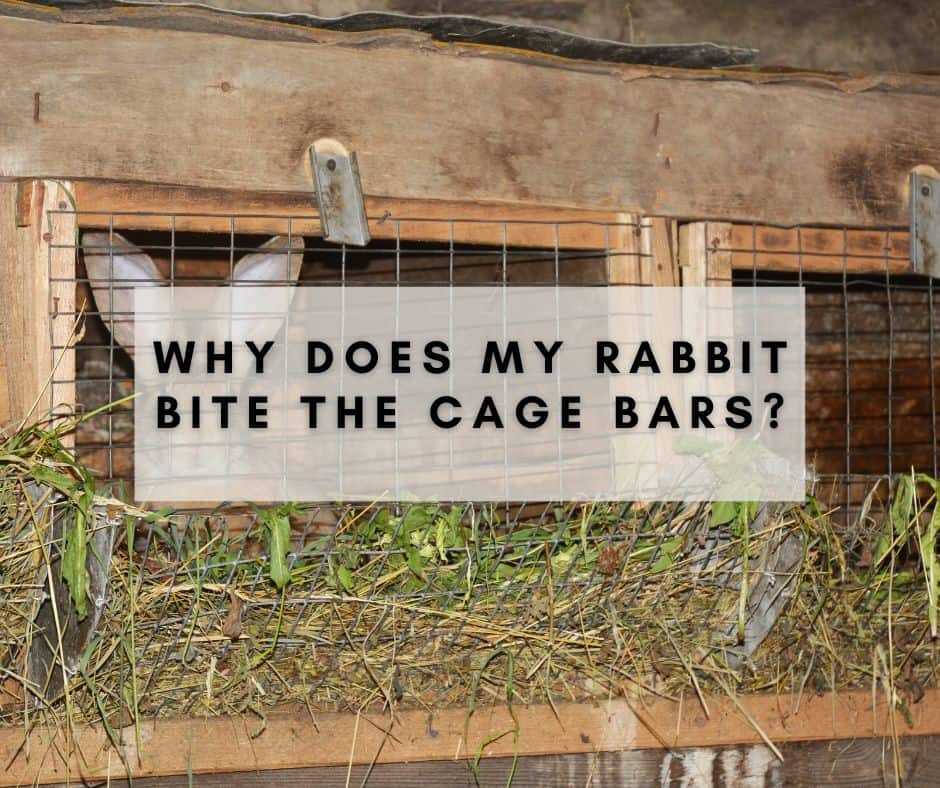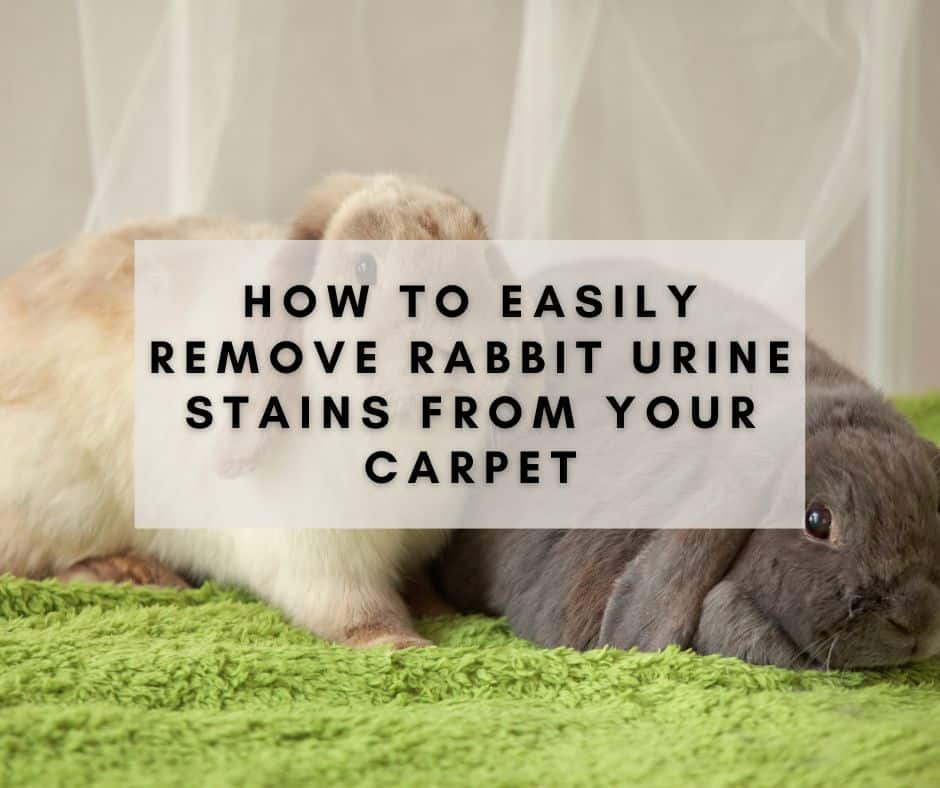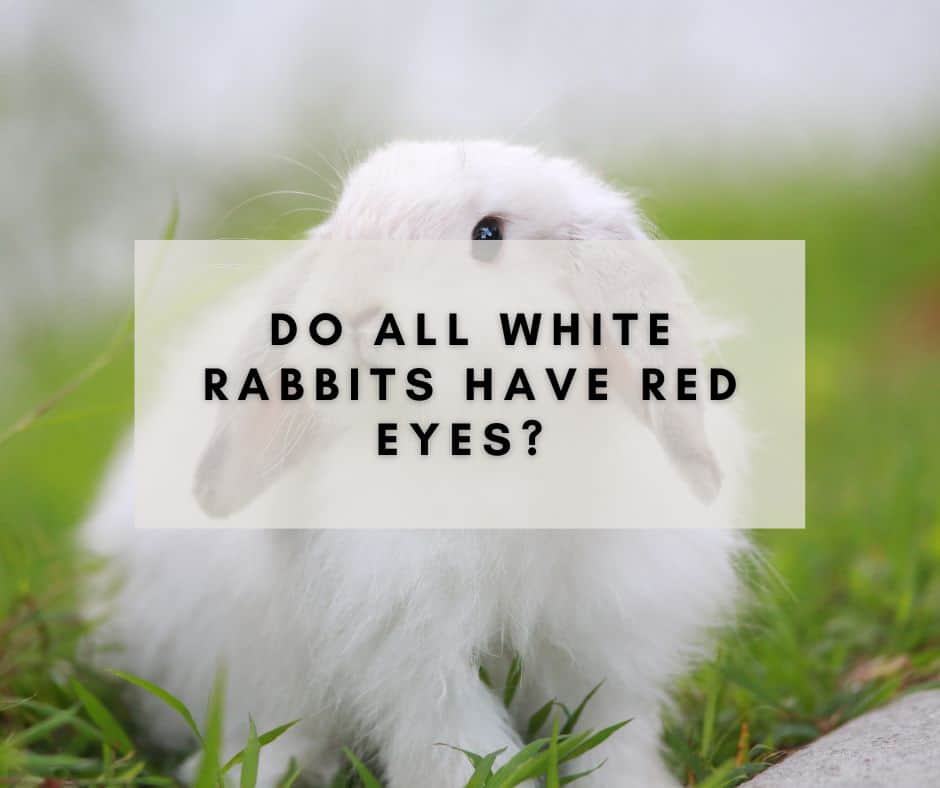Bearded dragons, or Pogona vitticeps, are a type of lizard native to parts of Australia. They are popular pets due to their friendly nature and relatively easy care needs. One important aspect of caring for a bearded dragon is providing it with the right amount and kind of heat.
Leaving the heat lamp on all the time can be detrimental to your pet’s health and well-being, so it’s important that you understand how to properly provide a heating source for your dragon.
As a general rule, you would need to keep the heat lamp on for 12 to 18 hours a day, depending on the climate where you live.
During the day, the lights should be kept on to provide enough heat for your dragon. During the night, the lamp should be turned off to create a cool environment that mimics your dragon’s natural habitat.
Contents
- 1 Bearded dragons are ectothermic.
- 2 Heat lamps shouldn’t run all night.
- 3 How long should heat lamps run during brumation?
- 4 How do bearded dragons benefit from heat lamps?
- 5 When should I turn on the heat lamps?
- 6 Finding the right temperature
- 7 What type of equipment should I have for the vivarium?
- 8 Should the heat lamp cover the entire vivarium?
- 9 Balance in the vivarium
- 10 Vivarium setup
- 11 Conclusion
Bearded dragons are ectothermic.
Being ectothermic entails that bearded dragons cannot thermoregulate without an outside heat source.
That’s why you’ll often find them basking in the vivarium, soaking up the heat from their environment.
And since regulating their body temperature is integral to their well-being, basking is their top priority.
Even baby bearded dragons use heat to aid their digestion. After all, juveniles eat five times a day for healthy growth.
Hence, the importance of heat lamps. The question is, for how long should it be running?
Heat lamps shouldn’t run all night.
Humans would not be able to function well if there were no intervals between night and day.
The same goes for bearded dragons. They need time to rest, which means a break from the heat lamps.
Ideally, heat lamps should mimic their natural environment, which means around 12 – 18 hours of heat lamp time.
By letting the heat lamps run overnight, beardies will mistakenly depict their environment as a never-ending day.
It will ruin their sleep cycle and be moody and grumpy all morning.
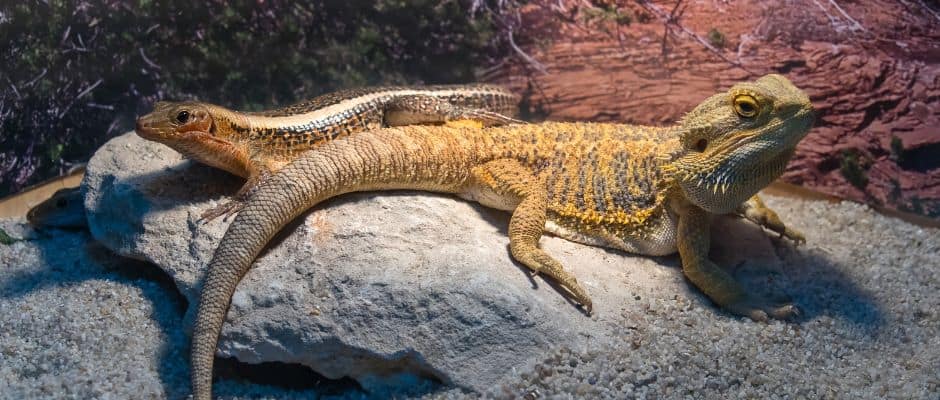
How long should heat lamps run during brumation?
Brumation, or the cold-blooded equivalent of hibernation, helps reptiles adapt during winter.
Heat lamps should only be on for 8 – 10 hours, imitating their natural winter environment.
How do bearded dragons benefit from heat lamps?
Heat lamps can do wonders for your beardie, affecting different areas of their health.
Vitamin D3
Bearded dragons, as pets, do not go out a lot. They’re usually stuck inside, chilling in the vivarium.
No outside time means less sun and can lead to Vitamin D3 deficiency.
But with the help of a heat lamp and a UVB Bulb, owners can ensure that their pet is getting enough “sun” time.
Digestion
Heat aids a bearded dragon’s digestion. It’s the reason why you’ll find them in the basking area right after a meal.
Furthermore, it helps them absorb the nutrients they get from their diet, such as calcium.
Appetite
Some bearded dragons refuse to eat without the right temperature. Talk about being fussy!
They like being warm to the point of refusing food when feeling cold, hence the importance of heat lamps.
Regulating temperature
As mentioned, beardies use external heat sources like lamps to regulate their temperature. Without it, they’ll be unable to heat up.
Detecting night and day
Beardies identify time through their lighting and temperature.
Not having enough light or warmth during the day can confuse their biological clocks, leading to irritation.
When should I turn on the heat lamps?
Heat can stimulate their appetites. So, it’s better to turn them on an hour before eating.
By doing this, they’ll have an easier time absorbing the nutrients of their food, and their overall digestion will improve.
Think of it like gearing up their stomach, preparing it to intake nutrients.
Finding the right temperature
The right temperature for bearded dragons can be hard to figure out. It is because their vivarium’s temperature should always mimic their natural environment.
So, while it may seem counterintuitive, you shouldn’t make their heat lamps hotter during the winter since they’re used to being a bit cold during that time.
During the day
40-42°C or 104-107°F is the optimal temperature for bearded dragons in the morning.
During the night
Bearded dragons are used to 73°-78°F or 23°-26°C in the wild. It’s natural for them to experience colder temperatures during this time.
What about the basking area, warm spots, and hiding spots?
Specific spots are where it gets tricky. With usual setups, these areas are separate, and their temperatures should reflect that.
For basking areas, follow the day temperature. On the other hand, hiding spots should be a little colder, closer to the night temperature.
Meanwhile, warm spots are colder than the basking area, around 35° C or 95° F.
What type of equipment should I have for the vivarium?
Brace yourself, because you’ll be needing a lot. Bearded dragons require three different heat fixtures to have a comfortable environment.
Heat Lamp
Bulbs that emit white light are a must for the vivarium.
Since beardies use the color of lights to differentiate day and night, having colored lighting may disrupt their circadian rhythm.
There are bulbs specifically for bearded dragons, like the DGE Reptile Basking Spot Bulb.
UVB Bulb
Wild bearded dragons use the sun not just for identifying time but also for nutrients.
That’s why UVB Bulbs are integral to a beardie’s living space. It ensures that they get enough Vitamin D3 and prevents the development of hypocalcemia.
Heat Emitter
Remember when I mentioned that heat lamps are like the sun? Well, what if they need heat during the night?
That’s where heat emitters come in. They provide warmth for your beardie without disrupting their sleep cycle.

Should the heat lamp cover the entire vivarium?
Heat lamps should not invade the other spaces of the aquarium, especially the hiding area.
Sometimes, the temperature can get too hot. So, your beardie would need a hiding area to stave off high temperatures.
After all, you won’t always be there to adjust the vivarium’s temperature.
Your beardie needs the right tools and areas to regulate their body without your help.
Balance in the vivarium
It’s ideal to have both areas (basking and hiding area), allowing your beardie to have options in adjusting to the climate.
Not only that, but they also use hiding areas during nighttime.
You see, wild beardies often have to watch out for predators. Finding a place to hide for sleep is coded in their survival instinct.
Hence, it can be difficult for them to sleep in an open space.
Vivarium setup
A bearded dragon’s enclosure should include four ideal areas for maximum comfort.
Basking Area
This area allows a bit more heat, helping your beardie get warmer when they want it to.
It should be at the very end of the vivarium, with less shade and a basking rock.
Heat lamps that emit white light are pointed directly at this area.
Hiding Spots
Hiding areas serve as a sleeping spot for your beardie. It should have a cave-like structure, shielding your bearded dragon.
It should also be on the colder side, opposite and far away from the basking area.
UVB Area
It’s optional because the essential part of the area is the UVB light, and you can put that anywhere and turn it on and off.
But, if you want a separate area, you can make it near your beardie’s hide.
Some setups have a UVB area above the hiding spots, dividing it with sturdy scaffolding.
Warm Area
Another optional spot. Technically, you can adjust the temperature whenever you need to or clump this with the UVB Area if you have a separate one.
The essential feature here is the temperature. It just needs to be lower than the basking area.
It’s a space for your beardie to help maintain the warmth without being overboard.
Conclusion
Heat lamps are necessary for your bearded dragon, aiding its vital body operations.
The key is finding the right temperature for them to be comfortable in the vivarium.
Otherwise, it can cause serious health concerns, such as loss of appetite, nutrient deficiency, and problems with digestion.

